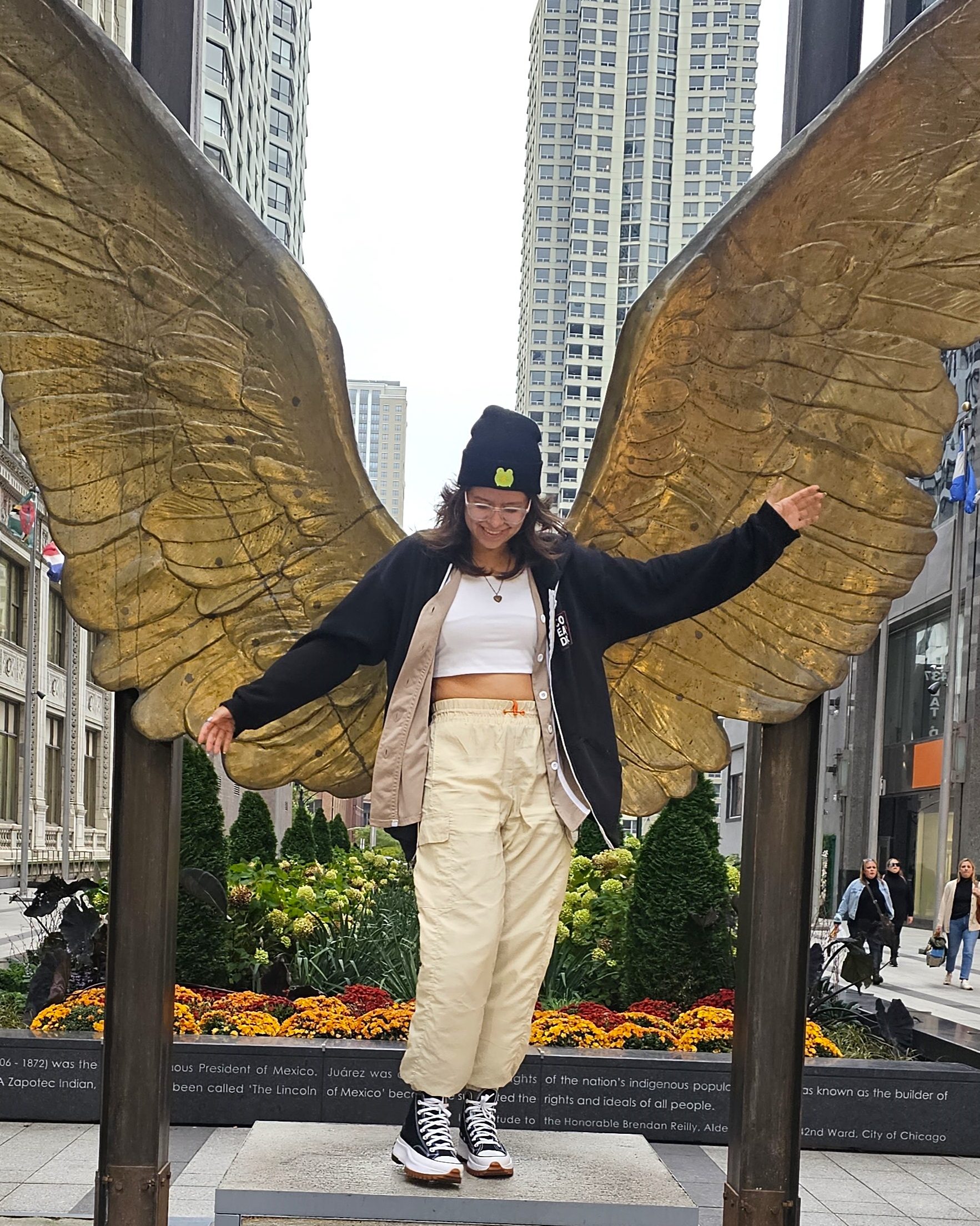
Amy Gomez is a junior student at Florida International University dedicated to her pursuit of a Digital Arts major with a specialization in Graphic Design, complemented by a minor in Art History. Her artistic journey is marked by a profound passion for illustration, music, and traveling. Amy’s roots trace back to Venezuela, where she grew up before relocating to Miami with her family at the age of 16. After college, Amy aims to apply her skills in a professional setting, using her experience to craft captivating stories with the ultimate goal of publishing a graphic novel in the future.
ART ENCOUNTER AS TEXT
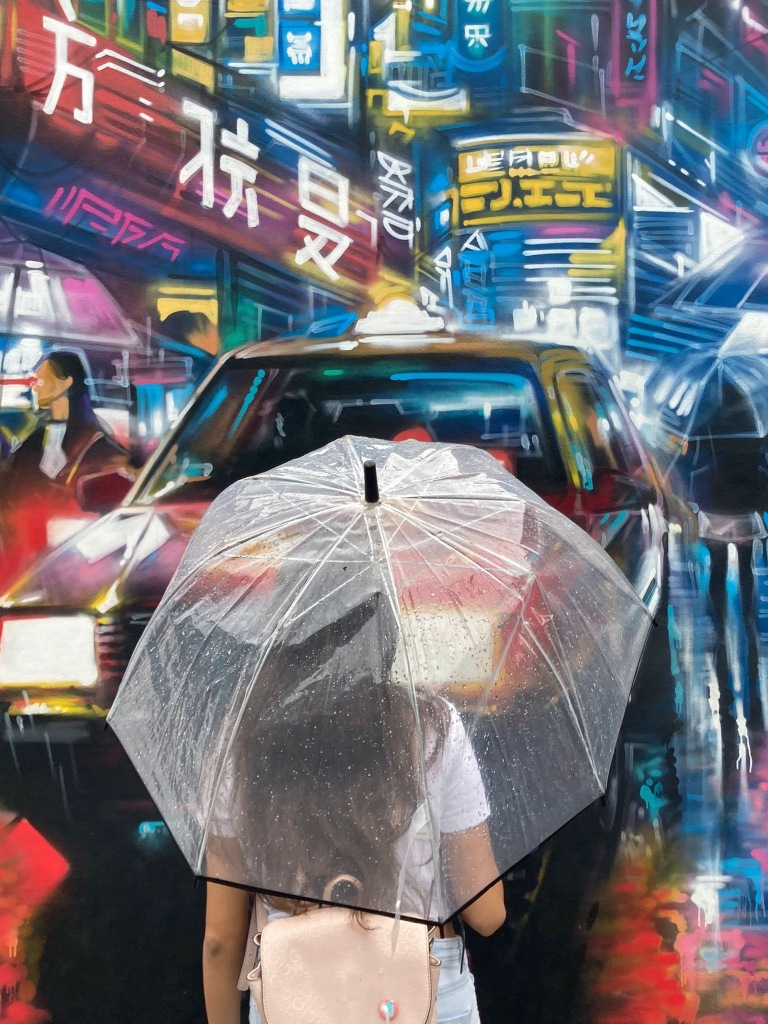
“Where Art Belongs”
By Amy Gomez of FIU, 18 January 2024
Art, a concept open for everyone to interpret yet remaining deeply personal for the artist, is priceless. Despite my Venezuelan roots, after only five years, I find myself more acquainted with Miami’s art scene than the artistic landscape of my own country. In Miami, art is omnipresent—whether through murals or events, the city’s creative spirit is inescapable when you live here.
High school exposed me to various art opportunities, including programs at Locust Projects, Oolite Arts, MOCA, and more. Thanks to dedicated teachers and their presentations, I’ve delved into the works of different local artists and their unique creative processes. Miami’s artists often draw inspiration from migration, exploring the challenges of starting anew for a better future, the internal conflicts of adapting to a new place, and the mixed emotions of embracing a fresh start. Beyond migration, the art here delves into themes like environmental stewardship and the roles of various minorities in the United States.
Before arriving in Miami, I viewed cities like California and New York as the exclusive hubs for appreciating art. However, it became evident that Miami’s culture is intricately entwined with art, providing a supportive environment for artists to flourish and gain recognition for their talent. My major is design, so I’m familiar with contemporary art, but I yearn to expand my knowledge beyond textbooks. Joining this class is my way of transitioning from being just a student to understanding the intricacies of the art world. I believe that knowledge without experience hinders the development of personal opinions. As an artist, I would feel intimidated by those who engage in conversations and debates defending their viewpoints and art.
A year ago, I would have claimed that creativity acted as a driving force for my passion, but my perspective has shifted. Disagreeing with the idea that creativity is an external entity, I now see it as an extension of myself. It isn’t a separate catalyst generating reactions in my art; rather, it stems from the way I perceive the world and digest life’s experiences, transforming them into something meaningful. When contemplating the role of art in my life, it’s more than a sporadic hobby—it’s an extension of my identity. Art, to me, isn’t just a casual activity; it’s a profound expression that mirrors who I am. It’s a unique channel through which I navigate and interpret the complexities of life. This shift in perspective has elevated my understanding of creativity—it’s not an external force but an internal, inseparable aspect of my being. So, when I conjure the image of art in my mind, it’s not just a picture but an authentic reflection of my essence, contributing to the continuous evolution of my passion and myself.
I eagerly anticipate the places we’ll explore this semester—whether a large museum, one I’ve visited before, or a simple discussion about a piece. Art never ceases to amaze me, and I believe this class will spark crucial conversations that enhance my artistic perspective and inspire me to make my mark in the city.
Norton Museum of Art as Text
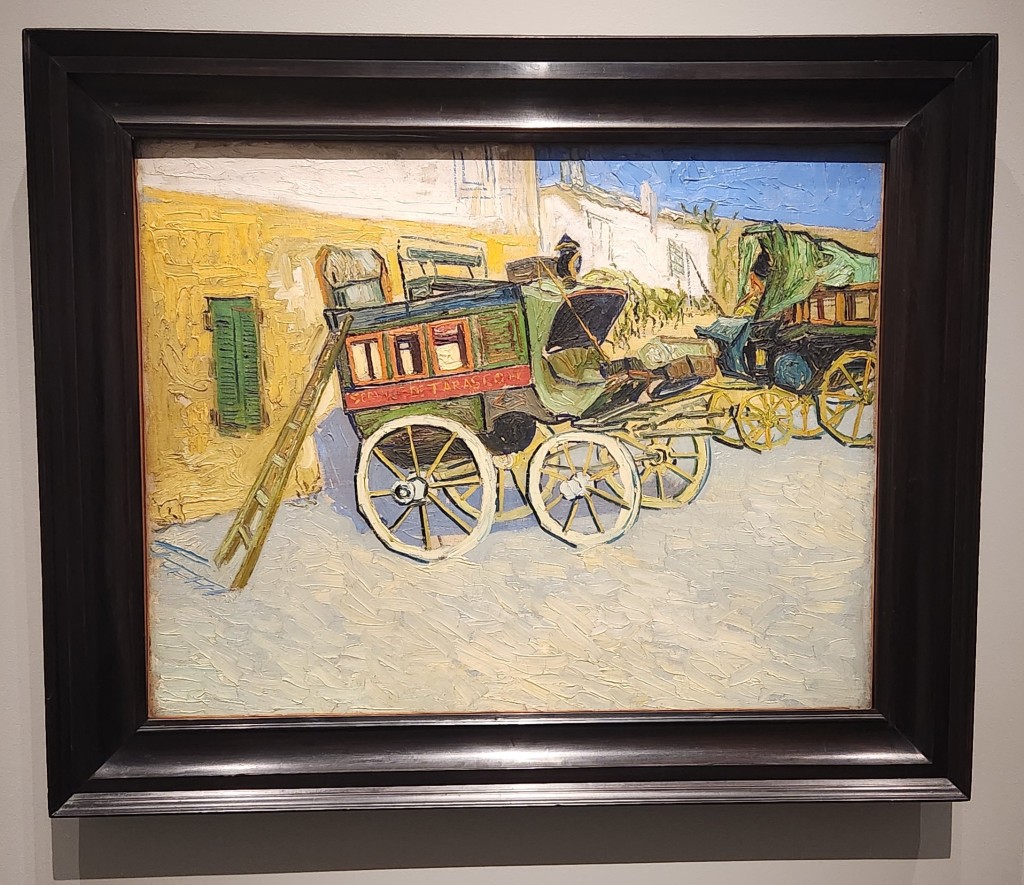
“History Through the Eyes of Artists”
By Amy Gomez of FIU, 28 January 2024
Going to the Norton Museum was a profoundly enriching experience. My Art History minor has equipped me to understand the context of nearly every artistic era and how artists depicted various struggles, whether political or social, that they faced. While I’ve encountered countless art pieces through pictures and presentations, our visit to the Norton Museum felt like a tangible journey through the history of humanity. Professor Bailly’s lecture vividly explained how each painting marked a transition from one period to another, illustrating how artists challenged artistic norms, innovated, and shaped the evolution of art over the years.
The museum offers a unique learning environment for students, enabling them to trace the trajectory of Western European art from the 1300s to the present day. Beginning with a series of four paintings depicting the Virgin Mary, the museum showcases the evolution of European art, particularly Italian, from the Byzantine influence evident in Gothic art of the medieval period to the naturalism of the Renaissance and the dynamic compositions of the Baroque era. Something intriguing I learned from these religious depictions was that, although they were initially viewed as sacrilegious objects because the church discouraged the worship of images over sacred beings, they eventually became accepted as tools for people to connect with heavenly figures.
It was fascinating to observe how the wealthier class sought to align themselves with figures like the Virgin Mary and even God, as seen in pieces like religious triptychs where donors often commissioned artists to include themselves in biblical contexts, offering insights into historical religious engagement.
The transition to Baroque painting revealed depictions of biblical and mythological themes on a grand scale, characterized by strong contrasts between light and shadow, vivid colors, and dynamic compositions. Viewing such landscapes and detailed narratives helped me understand how artists captured history through their paintings, providing current generations with glimpses into the past. Another intriguing aspect we discussed was portraiture, which served as the “Photoshop” of the wealthy. Despite the argument that only the elite could afford to stylize their image, their portraits endured for centuries, which is truly remarkable.
I would like to conclude by highlighting my personal favorite part of the visit: seeing artworks by Van Gogh, Picasso, and Monet. Picasso’s pieces, in particular, ignited profound contemplations on the nature of artistic innovation. His abstract simplicity challenged conventional perceptions of art, inviting viewers to reconsider what constitutes artistic mastery. While some might argue that Picasso’s techniques could be replicated by anyone, the essence of his work lies in his pioneering spirit, being the first of his time to delve into such radical artistic territories.
Similarly, Monet’s paintings, with their seemingly chaotic brushstrokes and unconventional compositions, transcend traditional standards of beauty. His ability to capture fleeting moments of light and atmosphere imbues his works with a sense of spontaneity and freedom that resonates deeply with viewers. Monet’s pieces serve as a testament to the idea that art is not bound by rigid rules or academic standards but rather embodies the essence of human creativity and expression.
In essence, the Norton Museum’s collection serves as a powerful testament to the enduring significance of art in shaping human history and culture. It provides a window into the past while inspiring reflection and dialogue about the nature of creativity, innovation, and the human experience.
Margulies/Bakehouse as Text

“A Glimpse Inside An Artist’s Mind”
By Amy Gomez of FIU, 11 February 2024
Entering the studio of an artist is like stepping inside their mind. Our visit to the Margulies Collection and Bakehouse Art Complex demonstrated the importance of valuing not just the act of creating art but also the processes and outcomes involved. As an artist, I often think about my control over the process and how personal it is, be it drawing, painting, or writing; creating art evokes a sense of belonging. Therefore, meeting artists and being allowed inside their workplaces was such a privilege to me. Getting to know Mr. Margulies was also surprising. Aside from his art collection, he carries such a legacy since he played such an influential role in making the art community in Miami what it is today.
The piece that left the most impact on me was definitely Ages of the World (Die Erdzeitalter) by Anselm Kiefer. As a creative, I can relate to this work in more ways than one. It presents unfinished discarded paintings piled one on top of the other, which we could say is trash. The fact that he used what most would discard and made it a statement is so powerful to me. When the staff got into the discussion about the concept, it surprised me that she did not give a specific definition to each part of the structure, meaning that the artist purposefully left most parts of his work open to interpretation, which successfully opened a discussion amongst the class.
One of the arguments was that the dead sunflowers could be a reference to the renowned artist Vincent van Gogh, but when I saw them, it immediately made me think of how ideas blossom in the brains of artists like flowers. The way they are withered makes me associate them with how sometimes we kill ideas by not developing them, be it because we think we do not have enough talent to pursue them or we just give up on them. So, I would say it is a visual and tangible representation of how discarded ideas look inside an artist’s brain.
There is something that Professor Bailly said that I think perfectly matched the overall feeling of this installation. He shared with the class his perspective on how art that makes you feel something without explicitly showing it is more valuable than perfect art. I think Ages of the World embodies this concept. It is impressive how something that might seem like trash to others holds such significant meaning to an artist. It made me think about how art nowadays tends to lean towards aesthetically pleasing, often opting for what will satisfy the audience instead of more introspective art.
This experience made me understand the importance of actually looking at and appreciating art, not just what we see on social media and trends but art that hides in an artist’s studio on Wynwood waiting to be shared and understood, art that demands a whole room and carries a story, art that has traveled from one country to another to be seen. We just need to be willing to see it and let this art change us.
Art Wynwood as Text
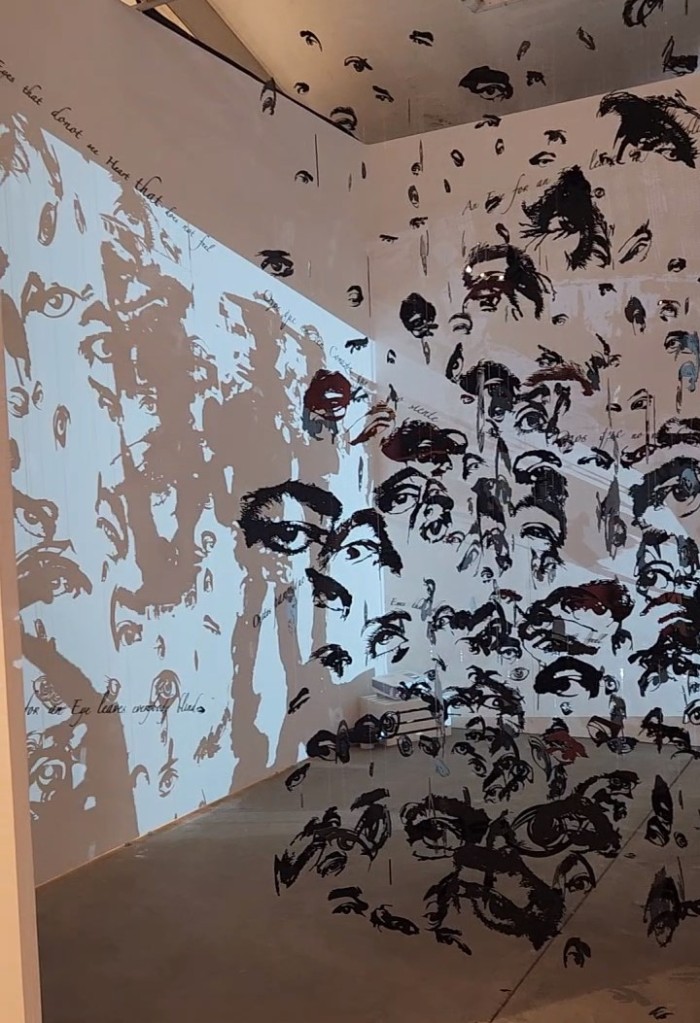
Photo taken by Amy Gomez at Art Wynwood (Downtown Miami, Florida 2024) / CC by 4.0
“Depth Amidst an Ocean of Commercialism”
By Amy Gomez of FIU, 4 March 2024
Our visit to Art Wynwood stood out significantly from all the other class trips we’ve taken. While the museums we’ve visited typically serve as monuments to human history, showcasing how artists captured societal changes through their art and providing glimpses into life in other times, the Art Wynwood exhibition offered a different experience. It was a vibrant display of color, drawing visitors in with pop and contemporary art. Unlike traditional museums, the event centered around galleries and artists actively selling artwork from all around the world rather than solely showcasing it.
One particular piece, “Ojitos Para Que Te Tengo (Eyes For What I Have You)” by Teresa Diehl, diverged from the usual art presented. I consider it a “hidden gem” amidst the array of art at Art Wynwood. Perhaps my opinion was influenced by the artist herself explaining the concept behind her installation and her process, but I believe any viewer could be instantly moved by it with just a brief explanation. Diehl explored political themes, a less common subject in such exhibitions due to potential controversy. “Ojitos Para Que Te Tengo” initiates a discussion about power in the wrong hands and its direct impact on people’s lives and futures. Diehl meticulously collected images of eyes from individuals in power, including dictators, presidents, and politicians, displaying them on black reflective plastic, each cut out by hand. The eyes hang from the ceiling on transparent wires, allowing viewers to walk around them while a video is projected on the walls.
Diehl explained how visitors can see their reflections in the dark plastic if they are close enough, suggesting that those in power can see the people they harm yet choose to ignore the consequences for their gain. The symbolism of the eyes also invokes the saying “An eye for an eye,” prompting questions about violence and how much pain it should take for the hate to stop. The looping video, featuring real-life footage of wars and political conflicts, complements the installation, creating a chaotic and dynamic piece that mirrors the turmoil of the world around us.
The artist explained how she had to rush to put the installation together, not being able to sleep properly for days. I think this speaks to the way artists commit to sharing a message, and how crafting our ideas and sharing them with others is essentially what drives our core. I greatly admire this type of determination and stubbornness to leave a mark, change lives, and give representation to subjects who are often avoided, given the fact it is not something common in this evolving generation where AI and technology are seen as a replacement for art instead of a tool.
Art Wynwood featured art designed to make an immediate impression, something to be seen, recognized, and understood. Unlike exhibitions that encourage introspection or reflection on broader world issues, this event embodied contemporary artists’ bold perspectives on mass media and the necessity for individuality and identity in a fast-paced world where everyone strives to be heard among countless voices.
Rubell/ Emerson Dorsch as Text
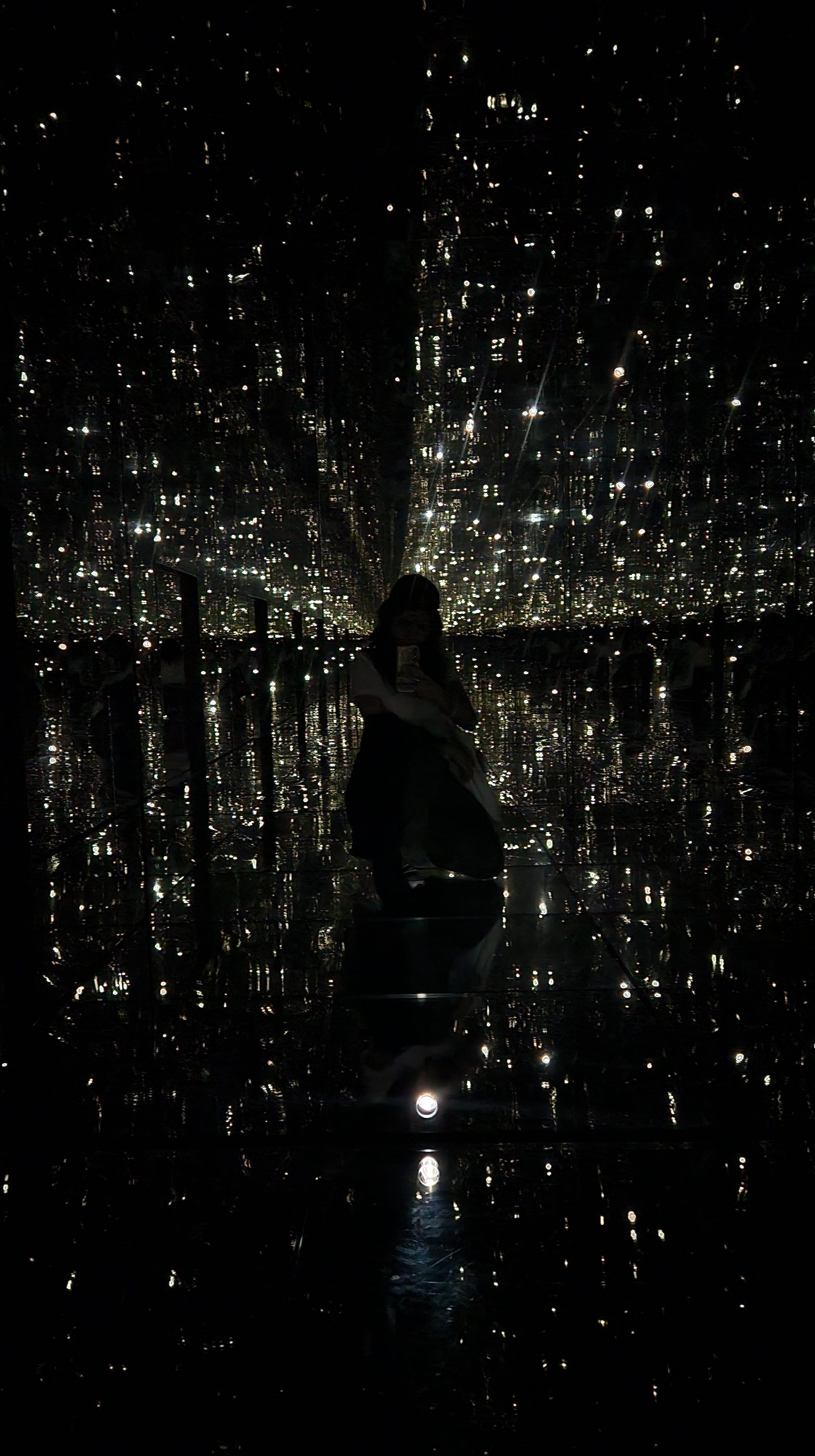
Photo taken by Amy Gomez at Rubell Museum (Miami, Florida 2024) / CC by 4.0
“Allow Art to Open Your Eyes”
By Amy Gomez of FIU, 17 March 2024
Our visits to the Rubell Museum and Emerson Dorsch were two completely different yet complementary experiences. This trip not only exposed our class to contemporary art and its significant role in the art world but also provided insights into how the art world operates today, including what museums and galleries are seeking and the criteria for art selection.
At the Rubell Museum, it was intriguing to see its focus on representation. I encountered paintings depicting the black community in a manner that celebrated its beauty and significance, represented in historically renowned styles like the ones of the Renaissance. These artworks portrayed black individuals in roles beyond servitude, along with sculptures depicting various forms of relationships, both familial and romantic. Additionally, the museum showcased representations of the LGBTQ+ community through large paintings, ranging from expressionistic to simplistic, depicting themes of love and connection between individuals. However, the highlight for me was the Kusama rooms. Yayoi Kusama’s art, rooted in personal experiences and psychological struggles, addresses societal repression towards identity, making it a perfect fit for the museum. Her immersive experiences prompt self-reflection, as exemplified by the room “Where the Lights in My Heart Go.” Despite its lack of artificial lights or screens, the mirrors within create a sense of companionship amidst solitude, conveying that darkness doesn’t necessarily equate to hopelessness; rather, it illuminates the beautiful lights within us.
Dorsch Gallery was particularly special because of the conversations we engaged in. Thanks to Ibett Yanez, the gallery’s director, and Daniel Clapp, the art preparator, our class gained valuable insight into the process of buying and selling artwork in contemporary society. Yanez offered a candid portrayal of the challenges most artists face when selling their work, shedding light on how artists are often treated as mere producers once their art is sold, leading to repetitive creative processes and potential burnout. Learning about the reality of auctioning was eye-opening, particularly how an artwork purchased from the original artist at a certain price could later fetch millions of dollars due to bidding wars among wealthy buyers. As an aspiring artist, I had viewed selling one’s work to a gallery or affluent client as a pinnacle of success. However, understanding that artists often receive no financial benefit when their work becomes famous and expensive, and are pressured to produce similar pieces to maintain their “identity” to buyers, has shifted my perspective. I now realize that selling artwork doesn’t always equate to artistic or personal fulfillment.
I can say our visit to both the Rubell Museum and Emerson Dorsch Gallery provided invaluable insights into the multifaceted world of contemporary art. From the celebration of diverse representation at the Rubell Museum to the honest discussions on the commercial aspects of art at Emerson Dorsch, our experiences underscored the complex interplay between creativity, commerce, and societal dynamics within the art world. These contrasting yet complementary encounters deepened our understanding of the challenges and opportunities artists face today, shaping our perspectives on the meaning and value of artistic expression in modern society.
PAMM as Text
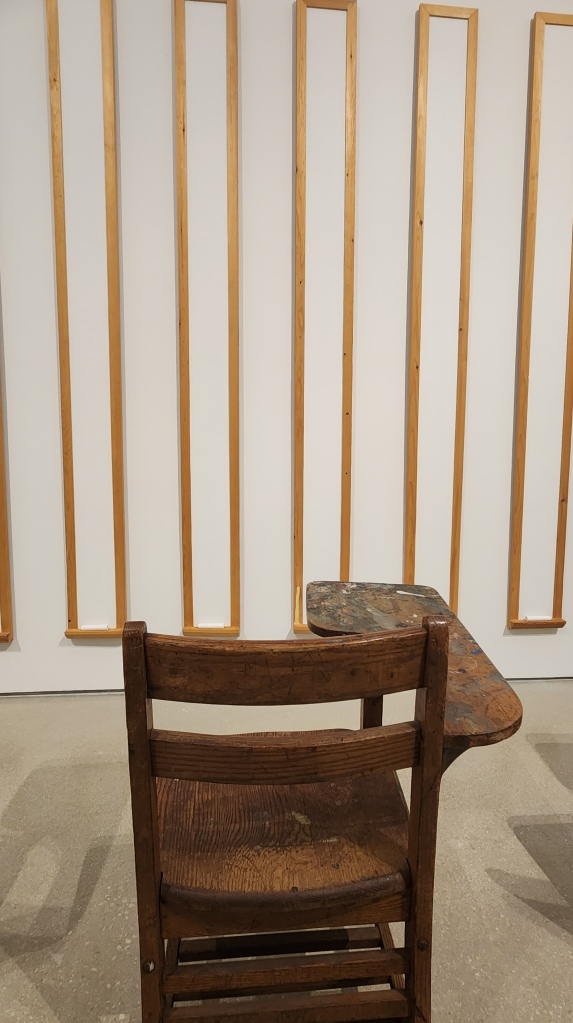
“What Has Been Taken”
By Amy Gomez of FIU, 31 March 2024
Our visit to the Perez Art Museum was filled with vibrant colors, conceptual art, and modern styles. Although it was my second time visiting, the exhibition differed so significantly from the first that it felt like exploring an entirely new museum. What surprised me the most about this visit was the intricate stories behind each exhibition. I realized the value of a tour guide because, while some art can be understood simply by observing it, engaging in dialogue with a guide who understands the thought process and meaning behind the pieces elevates the experience of appreciating art.
The highlight of our visit was Gary Simmons’ exhibition: “Public Enemy.” The tour guide proved essential for this section, not because the artwork couldn’t convey its message independently but because the depth of Simmons’ concepts surpassed what our eyes could discern.
Even the title sparked debate in our class, and Professor Bailly’s insight contextualized the artist’s intentions. He explained how Simmons linked the title of his exhibition to the escalating race controversies of the late ’80s. By naming his series “Public Enemy,” Simmons crafted a metaphor reflecting the struggles of African Americans who, unfairly targeted due to their race, were considered the “Public Enemy” of white supremacists. However, Simmons countered this narrative by creating artworks that celebrated black culture and examined issues of race, class, and gender identity within various facets of American culture, including cinema, music, literature, sports, and urbanism. This stance positioned Simmons as a “Public Enemy” to a society that marginalized his race, as he bravely spoke out, advocating for proper representation of black people in the artistic sphere.
Among his pieces, “Disinformation Supremacy Board” left the strongest impression on me. Upon entering the room, I initially felt a sense of familiarity seeing the small desks facing the wall. However, this perception shifted when I noticed the narrow chalkboards in front of them.
At that moment, I envisioned children seated at those desks, forced to conform to an unjust system that dictated what should or should not be taught, thus withholding crucial information that could shape future generations’ perspectives. Education’s significance often goes unrecognized, and Simmons masterfully illustrated how cultural memory can be manipulated by those in power, depriving seekers of knowledge of their right to learn.
The presence of white chalk and a whiteboard starkly exposes the truth about education like never before. It symbolizes the act of imparting nothing, denying students the opportunity to learn, and risking society’s forgetfulness of critical narratives, thereby perpetuating cycles of injustice. Despite being created in 1989, this lesson resonates more profoundly with all the ongoing issues, such as book banning and curriculum restrictions.
In a world where paintings and aesthetic perfection are often seen as the peak of successful art, conceptual pieces that raise questions instead of providing a statement or answers to a certain subject are the ones that can deeply move a viewer. I am awestruck by the profound impact meaningful art possesses and how works like the ones of Gary Simmons transcend their time, speaking to both past and future generations and amplifying the voices of the unheard.
Wolfsonian as Text
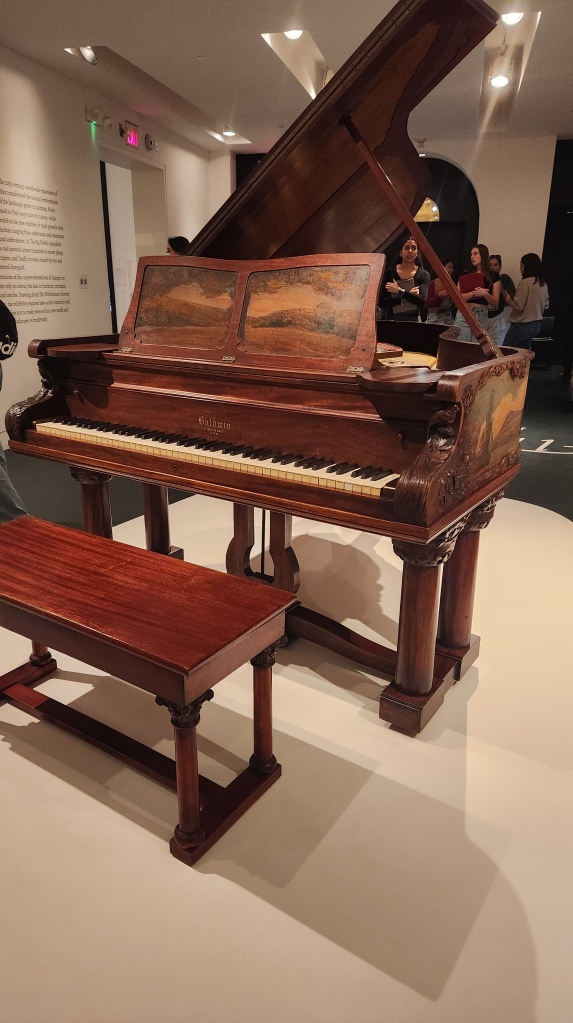
“What Happens When We Wonder?”
By Amy Gomez of FIU, 14 April 2024
Our visit to the Wolfsonian Museum was like entering a time capsule, a journey that unveiled an unseen side of history right before my eyes. Despite it being my second visit, this time, I delved deeper into the museum’s significance in Miami’s history and gained a profound appreciation for how art serves as one of the most tangible imprints of human existence on Earth.
As a graphic design major, my mind often gravitates toward contemplating the impact of advertising and illustrations on society. Previously, I had overlooked typography and layout as merely technical aspects employed to attract attention. However, Chief Librarian Francis Luca enlightened us on the various techniques designers employed in the past to entice people to Miami, presenting it as a paradise to escape the harsh cold of their respective states. This revelation made me realize the immense power of good design and its ability to reach and influence audiences, shaping their perceptions and even their behaviors. Mr. Luca explained the pivotal role of pamphlets and illustrative advertisements in defining the style of Miami and establishing its identity to those residing beyond Florida’s borders. One point of discussion between Mr. Luca and Professor Baily that particularly resonated with me was how media and design defined Miami with its distinctive identity. It’s fascinating to contemplate how art not only reflects a place but can also shape its trajectory, illustrating the profound influence art holds in enhancing a location’s popularity and altering its future trajectory entirely.
Preferring a more traditional approach, I appreciated the group activity we engaged in during our visit. Divided into small groups, we were tasked with crafting a story inspired by a piece of art that captivated us. The irony of this activity struck me as we found ourselves creating art while surrounded by art. In my college experience, even though my major is tied to traditional and contemporary art, students rarely have the opportunity to sit down, genuinely appreciate art, and engage in collaborative discussions or analytical writing about it. The result of our activity offered a glimpse into each other’s perspectives, showcasing the diversity of thought among us and highlighting how, despite our differences, we can find harmony and produce beautiful collaborative outcomes.
As viewers, we often seek to decipher the meaning behind the art we encounter, sometimes feeling inadequate due to our lack of professional or scholarly credentials. However, through engaging in discussions like these, I’ve come to realize that we possess the power to interpret artwork in a way that resonates with us. Even though a piece may have been created years ago to address specific issues of its time, its significance can transcend generations and remain relevant to contemporary issues—a testament to the enduring magic of art.
In conclusion, my visit to the Wolfsonian Museum reinforced my appreciation for the power of design in shaping perceptions and identities. Most importantly, it emphasized the timeless relevance of art in sparking meaningful conversations and reflections that transcend the boundaries of time and place.
ART FINAL REFLECTION AS TEXT

“When Art Belongs”
By Amy Gomez of FIU, 23 April 2024
At the beginning of the semester, I was expecting to be part of a class where we went places and learned about paintings shown in exhibitions, and while that was the base of the course, it was so much more than that. Art in Miami was truly a journey.
This class revived my curiosity for the unknown and completely ruined every other museum experience I have had in the past (thank you, Professor Bailly). The discussions we had about paintings and other works were so fulfilling that I cannot picture myself enjoying future museum visits in the same way without them.
Honestly, I do not think I would have visited all the museums we went to if I had not been part of this class. I would have probably made an excuse about how I didn’t have time or which museums to go to. But visiting these museums never felt like a requirement; the trips felt like a reward after a week of reality. Fridays became a break, an escape from my daily routine as a college student. Every week before the museum visits always had me wondering what I would discover next, and I am not exaggerating when I say none of my classes since I started college had me feeling like that.
I cannot complete this final reflection without mentioning the greatest artistic influence I got from all the trips. Not a painting, an exhibition, a sculpture, or a good place to eat, but Professor Bailly. I think what amazed me the most (besides the fact we literally saw a real Van Gogh painting up close) was the way Professor Bailly connected with the class. The quality of his lectures was truly refreshing. Every single time, I could see the excitement and passion he had for the subject, and it was so contagious that it made me want to be a better artist. He was, by far, the most impactful person I met at FIU; he truly cares about his students and genuinely wants to see them grow into amazing people. Sadly, mentors like this are rarely found, so I am really grateful that I got the opportunity to meet such an artist.
I have seen how art has evolved through the ages, and it helped me understand my evolution as an artist, internalizing how change is the most fulfilling thing that could happen to an artist. That is why I chose the picture of a tree I took during one of the classes for this reflection instead of an art piece. I think it embodies the process my creativity went through the semester. In my first reflection, I mentioned how creativity is an extension of myself. This class nurtured that artistic part of me that was being pushed aside to meet deadlines, making it blossom into something new. I learned how the artist’s environment, life experiences, dreams, fears, and hopes shape our art and somehow shape the world as well. This class made me feel the silly excitement of a child on a playground. Being exposed to so much art and so many stories behind it made me feel represented somehow and wonder if one day my artistic legacy will be seen and appreciated as theirs is.
Thank you for these amazing experiences!